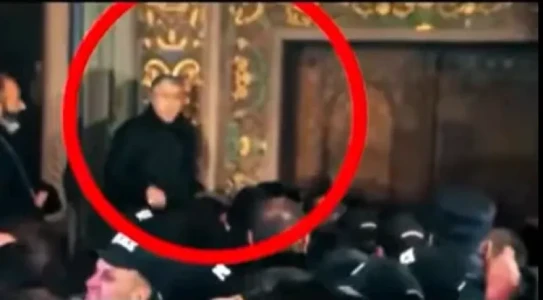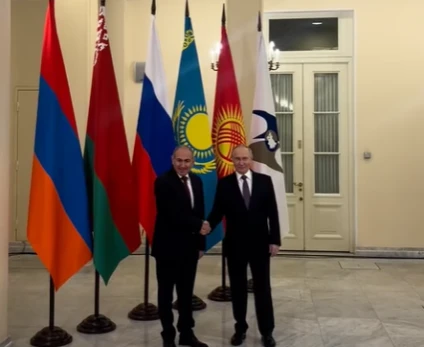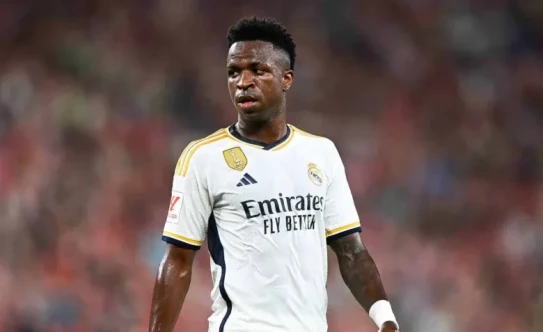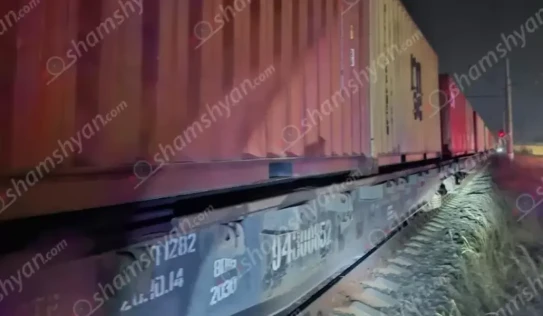Premiere: Tatev Asatryan - Snow (video)
That's what I wrote on my mother's grave. An exciting post by Nazeni Hovhannisyan
Turn on the light. Female envy (video)
Real Madrid are concerned about the tense atmosphere created around Vinicius
I express my gratitude to the President of Azerbaijan. Pashinyan (video)
The body of a 71-year-old woman was found on the train tracks in Gyumri
News
It is proposed to create a free economic zone in the east of Donbass. Zelensky
Israeli forces targeted the southern regions of Lebanon
The US intends to tighten sanctions against Venezuela as much as possible
The Prime Minister of Georgia demanded that the retail prices be adjusted to the European standards
Pope proposes "24-hour peace" in Ukraine
Zelensky called for a ceasefire to hold a referendum
Trump presented the South Korean president with a symbolic key to the White House
The KGB of Belarus has announced the possibility of holding early elections in Lithuania
Member of the European Parliament Vistisen. US Can Take Control of Greenland 'Without Firing a Shot'
In Kiev's peace plan, Ukraine refuses to withdraw troops from Donbass
Orbán has not ruled out war in Europe in 2026
From the evening hours of December 27, on December 28, a powerful cyclone will bring precipitation, in the form of snow in the mountainous regions. Surenyan
I strongly condemn the campaign organized by 8 bishops against the Mother See. Baptist Bishop
Oil tanker "Kelly" has returned to Venezuela loaded
The White House released a video on illegal immigrants on Christmas Eve
Khmer Times. Thai F-16 fighter jets attacked Cambodian territory
The black box of the plane carrying Libyan commanders crashed near Ankara was found
Charles III recorded his Christmas message at Westminster Abbey
Thailand and Cambodia will discuss a high-level ceasefire on December 27
The Pentagon has increased the contract for the production of C-130J aircraft to 25 billion dollars

The 12th century Armenian church door will be moved to the Armenian History Museum
In 2035, there may be clashes between humans and robots in Europe. Europol
The winner of Eurovision 2024 has refused the trophy because of Israel's participation
Scientists have discovered the chemical composition of small asteroids
A gene editing method has been developed to destroy HIV
Signals emitted by comet 3I/Atlas confirm its natural origin
A new life form has been discovered in Chernobyl
Revival of memory and culture. "The love story of Artsakh" returned to the stage (video)
The treasures of the depository-museum of St. Etchmiadzin Cathedral
People's Artist of Russia Vladimir Simonov died
It became known where the first people came from
Chimpanzees have been found to show signs of rational thinking
A terrifying bat signal has been detected in space
Scientists warn about the deadly danger of vaping
Scientists have discovered the secret to alleviating knee pain
Scientists have found out what the void of space is made of
Scientists have recorded the brightest black hole explosion in history
Two powerful flares were recorded on the Sun in one hour
The International Festival "Theatron" aims to strengthen the cultural dialogue between Armenia and the Francophone world
Scientists have discovered a hidden sign of psychopathy in relationships
























